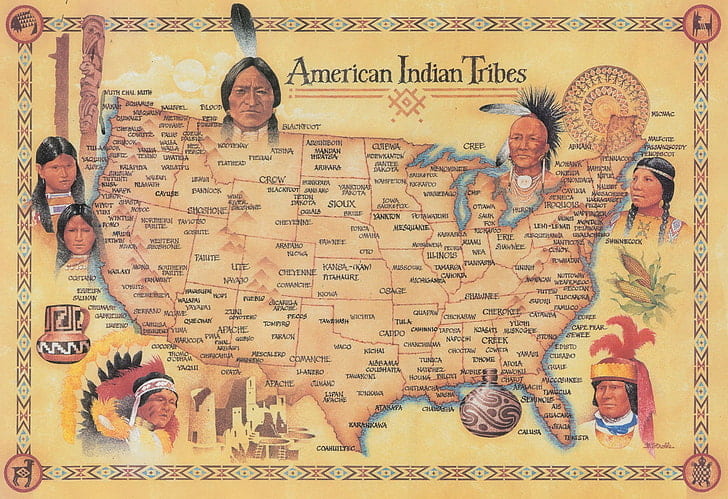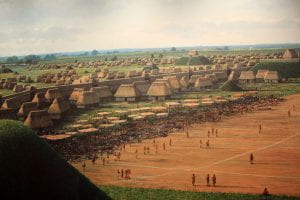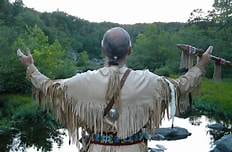“Indigenous Peoples’ Day” instead of “Columbus Day”
I would like to start with a land acknowledgment, a practice I was introduced to during a 21-day racial equity challenge I participated in over the summer. I extend my gratitude for the people of the Cherokee, Choctaw, Creek and Chickasaw nations for their preservation of the land that I live on today, and more generally, to all the members of the First Nations spread across the American continents for their wisdom, respect, and the deep cultural relationship they share with nature.
The history of the First Nations’ People in America overwhelmingly encompasses examples of atrocities and genocidal acts committed against them. On October 11, 2021, America officially recognized the inhumane treatment that the Native Americans faced for centuries and honored the brave warriors who fought against the oppression and genocide of their people. Yet, many continue to believe that America owes its discovery to Christopher Columbus. In an effort to set the record straight, it is vital to investigate why American society should stop idolizing Columbus and instead honor the people that have the original rights to this “Land of the Free.”

A Brief History and Lifestyle of the First Peoples’ Arrival to the Americas

We must explore the history of the indigenous people to truly understand the full context of why we should even acknowledge the land as belonging to the Native Americans. Tens of thousands of years ago, many humans crossed into the Americas, enduring tough terrain and temperatures while crossing the Bering Strait. This was an ice-covered land bridge that got destroyed as a combined result of great climate catastrophes and shifts in plate-tectonics. The break in the land bridge made travel between the two land masses impossible, and people in the rest of the world soon forgot that the Americas even existed. The people who managed to cross the bridge before its break, spread out through the North and South American continents and began to establish civilizations. Contrary to what our education systems professes, these great civilizations included trade routes between tribes, farm lands that practiced polyculture crop cultivation, and had even established impressive cities such as Cahokia, Chaco Canyon, and Tenutchtitlan.

Additionally, many Native American societies were matriarchal, believing that women were the wise members of their communities that were responsible for creating life, educating their children, and tending to the harvests, among other things. This empowered women to make important decisions surrounding faith, as well as gave them political and economic powers that pertained to the governance of their societies. The matriarchy appeared to be a direct threat to the European settlers, who were primarily patriarchal, believing that the women’s place was at the home, and that men would be the ones to make all the decisions for them. This clash of ideologies led to more conflicts between the Native Americans and the European settlers.
Furthermore, the Native Americans had perfected polyculture crop cultivations, a sustainable method of farming that enables different crops to grow together and provide support to each other in the form of nutrients, shade, or prevention of soil erosion, among other things. The Native Americans planted beans, corns and squash together, famously known as the Three Sisters, using polyculture methods to both protect their crops and also produce an abundance of food. When the colonial settlers first arrived, the Native Americans not only provided them with a warm welcome of food and shelter, but also taught them how to grow the Three Sisters to survive. Similarly, the Native Americans also provided the settlers with insight on how to practice hygiene, as Europeans believed that changing into clean garments was good enough and did not associate water with hygienic rituals until their arrival to the Americas. The Native Americans essentially played a tremendous role in ensuring the survival of the settlers that continued to arrive on their lands.
Columbus and his Treatment of the Native Americans

The arrival of Christopher Columbus brought with it death, destruction, and devastation to the Native Americans. The first interactions with the Europeans introduced the Native Americans to diseases that they had not developed immunity to, killing hundreds of Natives as a result. Columbus arrived with his crew members into the New World believing it to be India, and thus naming the people who greeted him and his crew members as Indians. Although he had set out in search of spices, upon seeing the Native Americans adorned in some gold jewelry, Columbus became greedy for their gold. His new mission was to bring back as much gold as he could, and so his cruel rampage began. He tortured innocent Native Americans for their gold, cutting off the hands of those who refused to give up their gold, and sometimes even burning down entire villages for the precious mineral. Columbus was also a slave trader, forcing hundreds of Native Americans onto his ships to take them back as slaves to Spain. As if this wasn’t atrocious enough, he also managed to kidnap young Indigenous girls and force them into sexual slavery to provide pleasure for himself and his crew members. To make matters worse, he became a sex trafficker, preferring to kidnap girls between the ages of 8-10, noting that they bring the best profits.
How Do Indigenous People Continue to Suffer Today?

Ultimately, to the First Peoples of this nation, Columbus has become the face of the brutalities and genocidal acts committed against the Native American population in the United States. To this day, Native Americans simultaneously deal with the systemic racism and the consequences of colonization as a result of a loss of culture leading to depression, and elevated levels of alcoholism, to name a few. Native Americans feel invisible to the larger society, as women are also disproportionately disappearing, and no one seems to notice or care. America has continued to disrespect the Native Americans, polluting the lands and rivers that they share a spiritual connection with, and even defiling their sacred mountain, Mount Rushmore, with the images of American leaders that represent colonialism and the genocide of their people.
Why We Should Honor the First Nations’ People Instead

The Indigenous People of America have taught us so much about the world we live in. They played a crucial role in the survival of the settlers that arrived in a new world without the slightest idea of how to survive its harsh conditions. They have also vigorously fought against their oppressors, and more recently, against climate change. They are at the forefront of many environmental movements, including the protests that were led against the building of the Dakota Access Pipelines that would prove to be an environmental disaster for those who live in surrounding areas. This Pipeline was projected to cut through the reservations of the Standing Rock Sioux (which is protected under a treaty), and the members of the Sioux nation argued that the pipelines would lead to environmental concerns in their waterways, and if it were to burst or have accidental spills, would prove to have enormous ecological consequences while simultaneously endangering the residents in the surrounding areas. Due to the fact that Native Americans share a special spiritual relationship with nature, the First Nations People practice sustainable farming and protect their environments from pollution. Their practices can provide a very important skill that we can incorporate into our larger society and even on a global scale, to help combat climate change.
Overall, we should dedicate a day to celebrate the Indigenous People of America and all their heroic actions, from their significant roles in the survival of the settlers when they first arrived, their courageous efforts to fight back the oppression and genocide targeted at them, as well as their ability to practice sustainability and preserve natural ecosystems from pollution and destruction. This day should replace the current celebrations of Columbus Day, a day that continues to celebrate an individual who was directly responsible for genocide, inflicting pain, suffering, and torture on thousands of Native Americans. We shouldn’t just add Indigenous Peoples’ Day to the calendar alongside with Columbus Day; we should stop celebrating Columbus Day altogether.



